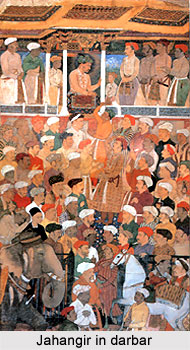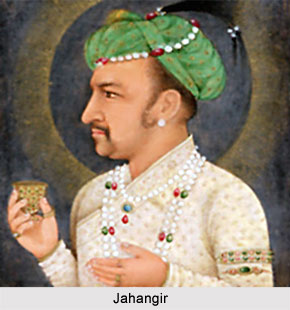 Jahangir was another Mughal emperor, who after Akbar had the adoration for painting. He was not merely an avid collector of paintings but was also an expert with strong views and judgments about the paintings.
Jahangir was another Mughal emperor, who after Akbar had the adoration for painting. He was not merely an avid collector of paintings but was also an expert with strong views and judgments about the paintings.
As per one of his accounts, Jahangir said, "My liking for painting and my practice in judging it have arrived at such a point that when any work is brought before me, either of deceased artists or of those of the present day, without their names being told me I say on the spur of the moment that it is the work of such and such a man, and if there be a picture containing many portraits, and each face be the work of a different master, I can discover which face is the work of each of them. And if any other person has put in the eye and eyebrow of a face, I can perceive whose work the original face is and who has painted the eye and eyebrows."
The painters employed by Jahangir in his Imperial studio were capable of producing identical copies of works in his collection. So, he was very proud of his set of painters. Once, Sir Thomas Roe presented Jahangir a female portrait on vellum by the English miniaturist Isaac Oliver. Jahangir asked one of his `painters` probably to Abul Hasan or Mansur to copy and then he challenged Roe to distinguish the copies done by his painter from the original. They were mounted and shown to him by candlelight, but, despite the poor light, Roe readily, distinguished the original one and explained to Jahangir the grounds for his conclusion. Roe reluctantly admitted that in the art of limning (portrait miniatures) Jahangir`s painters `work miracles`.
 The numerous attributions in Jahangir`s own hand of paintings executed by the painters of his imperial studio can be taken with considerable confidence. Jahangir used to receive very eagerly the manuscripts and paintings as presents. He once received an illustrated copy of the romance of Yusuf and Zulaykha from Abd al-Rahim Khan-i Khanan which, Jahangir noted was worth 1,000 gold mohurs. He used to complete the books under his imperial studio by ordering miniatures to complete unfinished works or painting himself or Akbar or his sons into them.
The numerous attributions in Jahangir`s own hand of paintings executed by the painters of his imperial studio can be taken with considerable confidence. Jahangir used to receive very eagerly the manuscripts and paintings as presents. He once received an illustrated copy of the romance of Yusuf and Zulaykha from Abd al-Rahim Khan-i Khanan which, Jahangir noted was worth 1,000 gold mohurs. He used to complete the books under his imperial studio by ordering miniatures to complete unfinished works or painting himself or Akbar or his sons into them.
Aqa Riza Haravl, a specialist in nita-qalata, and also his son, Abul Hasan later became one of Jahangir`s favourite painters, whom he employed in his imperial studio. The portraits and religious paintings hung in public places were well reflected in the contents of the great albums made for Jahangir. Among these two of them indicate that his exceptionally varied tastes were also formed even before he reached the throne. One of such paintings now can be found in Berlin and the other in the Gulistan palace in Teheran.
Some works of imperial studio of Jahangir include the calligraphy, particularly the work of Sultan `All Mashhadl` and Mir Ali Haravl whose work had given them legendary fame in Persia. European prints and drawings of 19 religious or allegorical subjects together with Mughal copies or 57 versions of them, a few Deccani paintings and a range of contemporary portraits of Jahangir and of his officials were also there in the imperial studio of Jahangir. The choice of material of these paintings reflects Jahangir`s own taste.
The interest of Jahangir in Sufis, which went well beyond that of contemporary Muslim rulers, also reflects in the Imperial albums in genre paintings of rulers or princes visiting ascetics. Jahangir is said to have greater sympathy for Hinduism, hence the Allahabad Jog Bashisht and also genre paintings of saddhus and yogis also found places in his imperial studio. But he had no inclination towards Christianity and it is proved from the fact that he never referred about the European religious paintings hung in the royal palaces and the paintings on Christian themes in his records.
The Mughal painting got wide and became largely biographical with the inclusion of illustrations to chronicles, portraits and natural history, as well as biography proper. Jahangir included all these in his imperial studio. Jahangir was a perfect descendant after Babur, who partially wrote down Babur`s Chaghatay text and also wrote his own autobiography, the Tiizuk-i Jahangiri, covering the first eighteen years of his reign. All these were preserved in his imperial studio. In some of the paintings of this imperial studio, first and foremost portrait of Jahangir and his son with his generals and his ministers around him are depicted. The foregrounds of this painting are shown with rich presents and some of them were wrapped in cloth of gold or brocaded or embroidered silks and all these were laid out on a fine carpet. The background of the painting had display of vessels of coloured glass, agate, rock crystal or jade, Chinese porcelains.



















